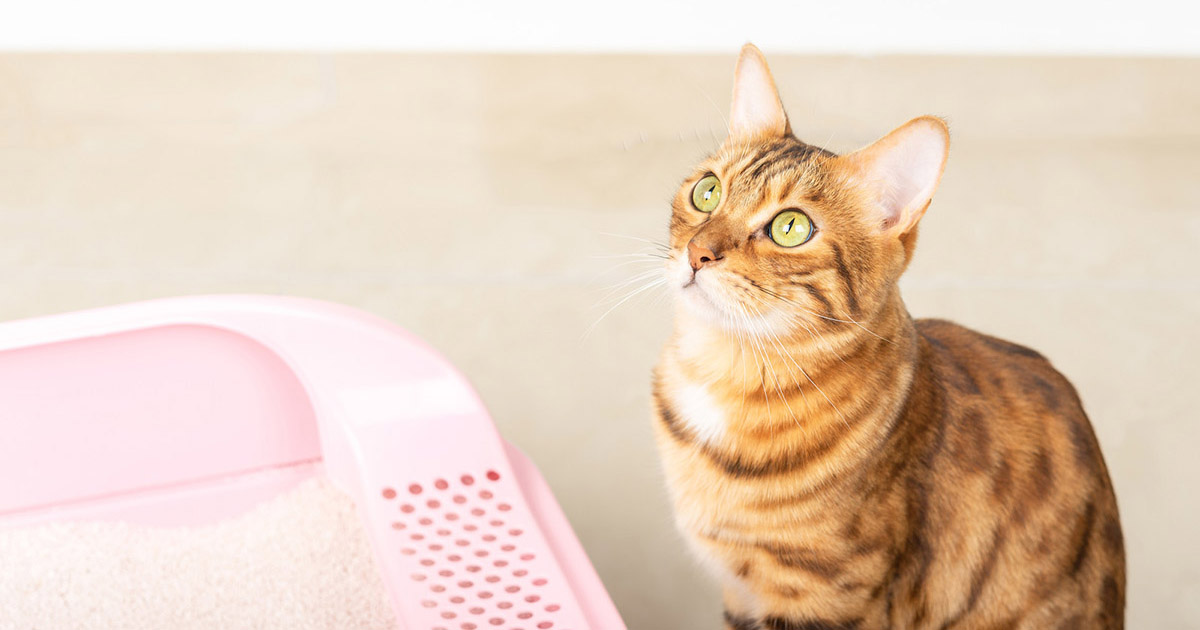Potential Risks of Flushing Cat Poop Down Your Toilet - Tips for Better Handling
Potential Risks of Flushing Cat Poop Down Your Toilet - Tips for Better Handling
Blog Article
Here in the next paragraph you can find additional great insights about Can You Flush Cat Poo or Litter Down the Toilet?.

Introduction
As feline owners, it's necessary to bear in mind exactly how we throw away our feline pals' waste. While it may seem hassle-free to flush feline poop down the toilet, this method can have destructive consequences for both the environment and human health and wellness.
Alternatives to Flushing
Luckily, there are much safer and extra responsible methods to deal with feline poop. Consider the adhering to alternatives:
1. Scoop and Dispose in Trash
One of the most common method of dealing with feline poop is to scoop it into a biodegradable bag and toss it in the trash. Make sure to use a specialized clutter scoop and deal with the waste immediately.
2. Use Biodegradable Litter
Opt for eco-friendly feline litter made from products such as corn or wheat. These litters are eco-friendly and can be safely disposed of in the trash.
3. Hide in the Yard
If you have a lawn, take into consideration burying feline waste in a designated area far from vegetable gardens and water sources. Make certain to dig deep adequate to prevent contamination of groundwater.
4. Set Up a Pet Waste Disposal System
Buy a family pet garbage disposal system especially made for feline waste. These systems utilize enzymes to break down the waste, minimizing odor and environmental impact.
Health Risks
Along with ecological worries, purging feline waste can also pose wellness threats to people. Cat feces might have Toxoplasma gondii, a bloodsucker that can cause toxoplasmosis-- a possibly serious disease, particularly for expecting women and people with weakened body immune systems.
Environmental Impact
Purging feline poop presents dangerous microorganisms and bloodsuckers into the water, positioning a substantial risk to water ecosystems. These contaminants can adversely impact aquatic life and concession water high quality.
Final thought
Liable family pet possession expands beyond giving food and sanctuary-- it additionally entails appropriate waste monitoring. By avoiding flushing cat poop down the commode and selecting alternate disposal methods, we can lessen our ecological footprint and safeguard human health and wellness.
Why Can’t I Flush Cat Poop?
It Spreads a Parasite
Cats are frequently infected with a parasite called toxoplasma gondii. The parasite causes an infection called toxoplasmosis. It is usually harmless to cats. The parasite only uses cat poop as a host for its eggs. Otherwise, the cat’s immune system usually keeps the infection at low enough levels to maintain its own health. But it does not stop the develop of eggs. These eggs are tiny and surprisingly tough. They may survive for a year before they begin to grow. But that’s the problem.
Our wastewater system is not designed to deal with toxoplasmosis eggs. Instead, most eggs will flush from your toilet into sewers and wastewater management plants. After the sewage is treated for many other harmful things in it, it is typically released into local rivers, lakes, or oceans. Here, the toxoplasmosis eggs can find new hosts, including starfish, crabs, otters, and many other wildlife. For many, this is a significant risk to their health. Toxoplasmosis can also end up infecting water sources that are important for agriculture, which means our deer, pigs, and sheep can get infected too.
Is There Risk to Humans?
There can be a risk to human life from flushing cat poop down the toilet. If you do so, the parasites from your cat’s poop can end up in shellfish, game animals, or livestock. If this meat is then served raw or undercooked, the people who eat it can get sick.
In fact, according to the CDC, 40 million people in the United States are infected with toxoplasma gondii. They get it from exposure to infected seafood, or from some kind of cat poop contamination, like drinking from a stream that is contaminated or touching anything that has come into contact with cat poop. That includes just cleaning a cat litter box.
Most people who get infected with these parasites will not develop any symptoms. However, for pregnant women or for those with compromised immune systems, the parasite can cause severe health problems.
How to Handle Cat Poop
The best way to handle cat poop is actually to clean the box more often. The eggs that the parasite sheds will not become active until one to five days after the cat poops. That means that if you clean daily, you’re much less likely to come into direct contact with infectious eggs.
That said, always dispose of cat poop in the garbage and not down the toilet. Wash your hands before and after you clean the litter box, and bring the bag of poop right outside to your garbage bins.
https://trenchlesssolutionsusa.com/why-cant-i-flush-cat-poop/

We are very excited about How to Dispose of Cat Poop and Litter Without Plastic Bags and I am assuming you enjoyed reading the entire blog posting. Make sure you take the opportunity to share this write-up if you enjoyed it. Thanks a lot for taking the time to read it.
Visit Homepage Report this page